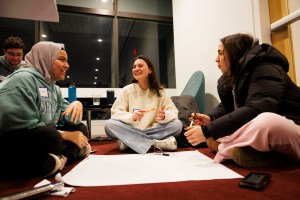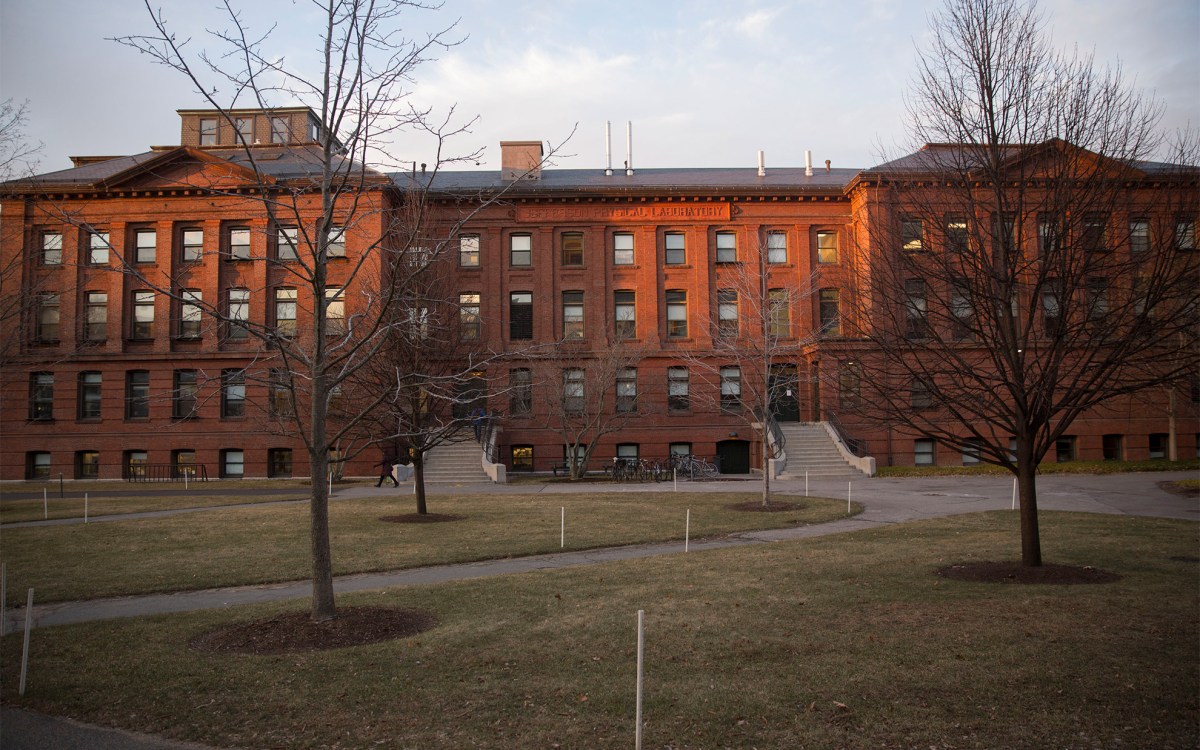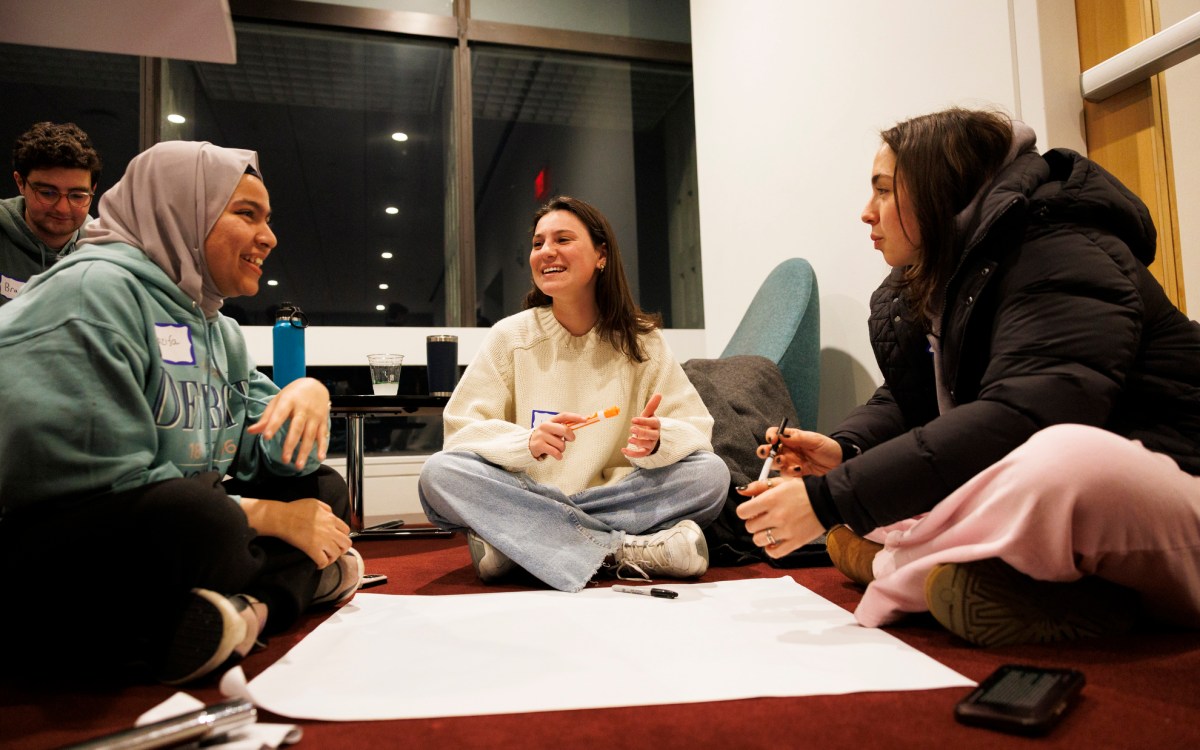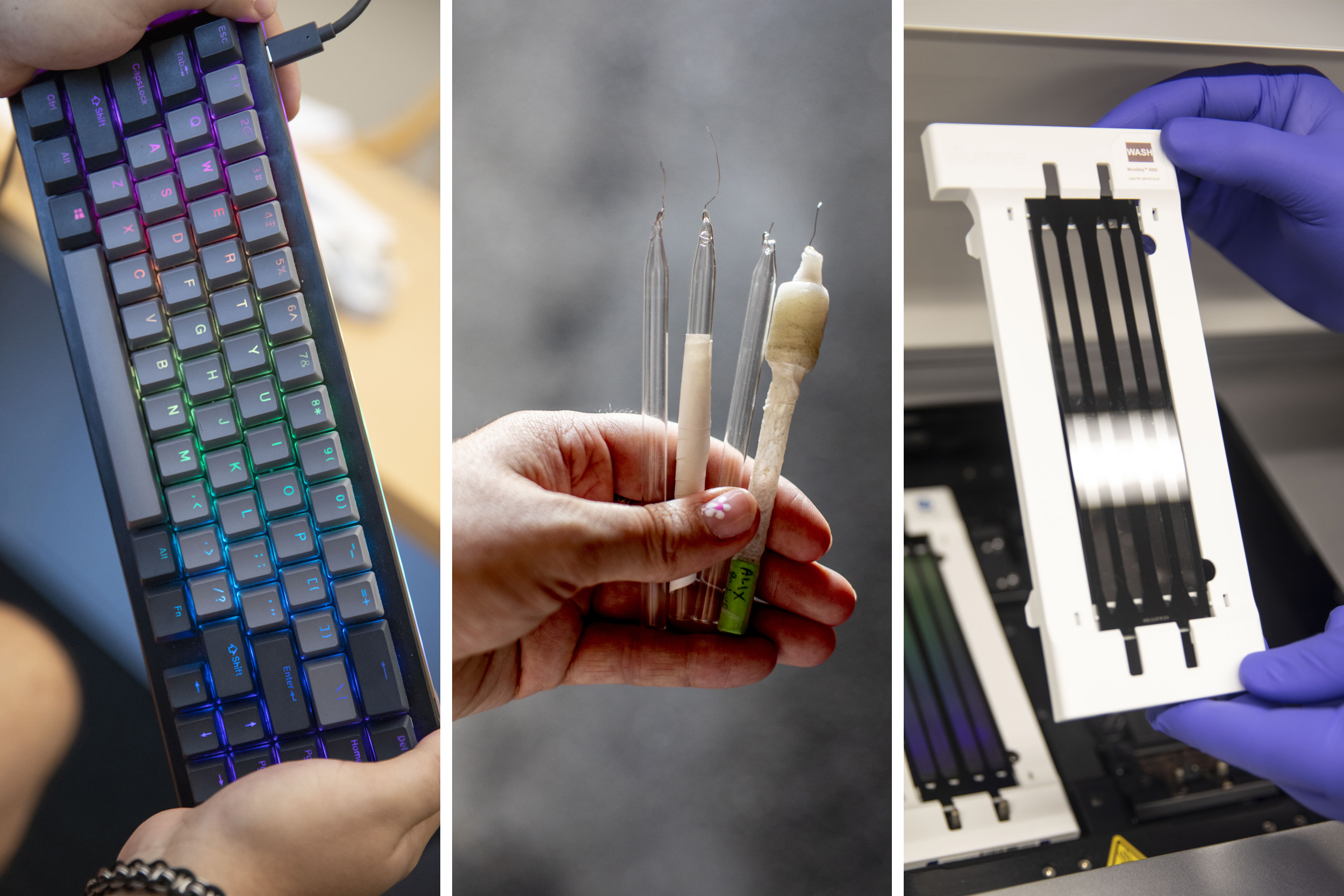
A selection of favorite or essential tools used by Harvard scientists.
Photos by Harvard Staff Photographers
Quick, hand me my worm pick
Scientists describe cherished tools of the trade
Scientists use a multitude of tools, from advanced quantum machines to chalk and blackboard, to investigate and solve their inquiries. Their equipment varies depending on their subjects, but also from scientist to scientist. The Gazette asked several Harvard researchers for their most treasured or essential pieces of lab, field, or office equipment. The answers range from highly technical to downright quirky.
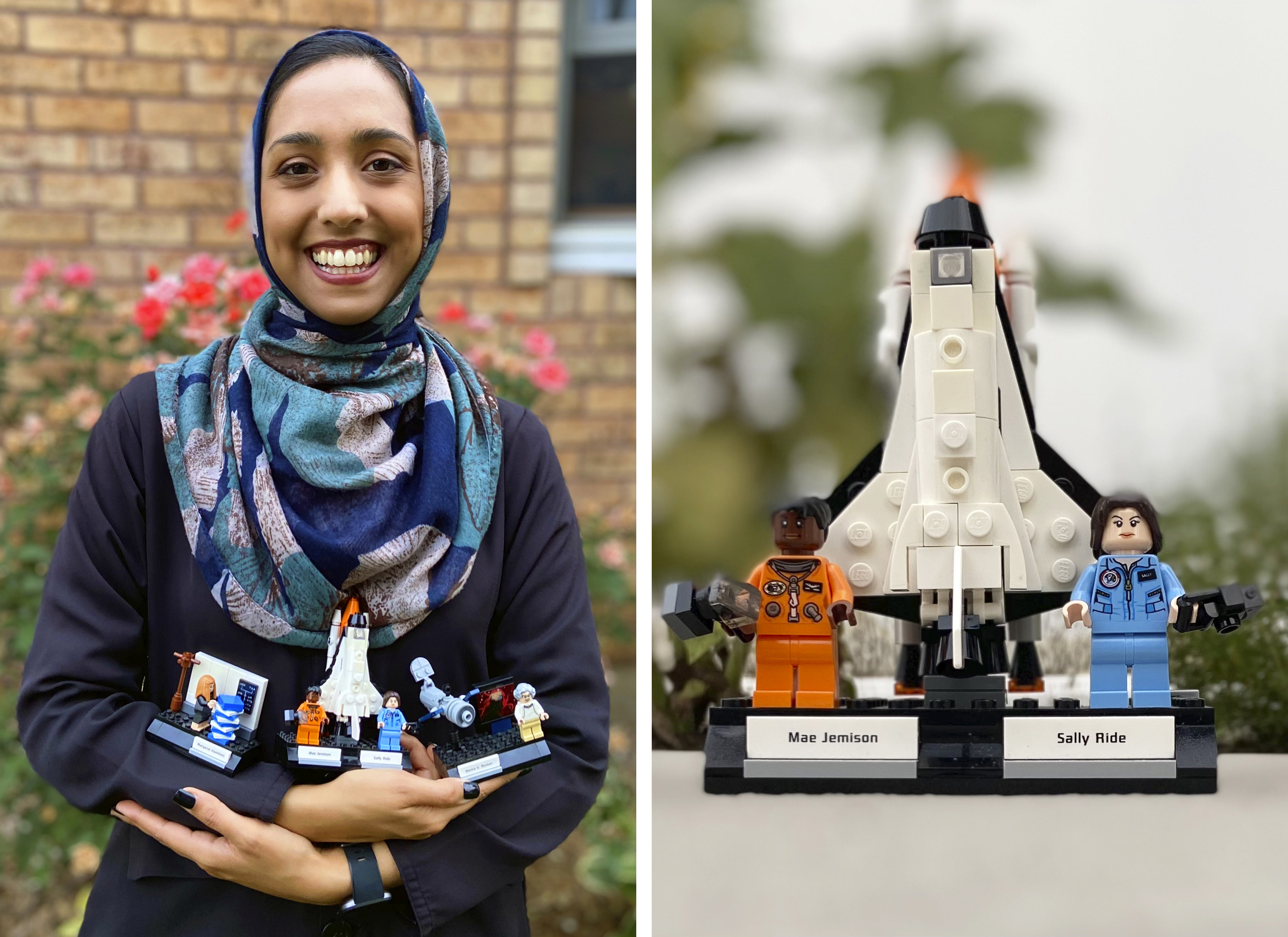
Photos courtesy of Munazza Alam
Munazza Alam, A.M. ’18, Ph.D. ’21
Graduate researcher, Department of Astronomy
Favorite item: Women of NASA Lego set
An astronomer who studies the atmospheres of exoplanets, Alam writes computer programs to process and analyze observations from instruments on NASA’s Hubble Space Telescope. While she’s waiting on these programs, she toys with a piece of office decor: Women of NASA Legos, which feature famed astronauts Sally Ride and Mae Jemison along with computer scientist Margaret Hamilton and astronomer Nancy Grace Roman. “They’re a reminder of the trailblazing women before me,” said Alam, a National Geographic Young Explorer whose favorite is the figure of Roman, considered the mother of the Hubble telescope. “As I’m analyzing Hubble data, to have a little NASA figure of her nearby is very special.”
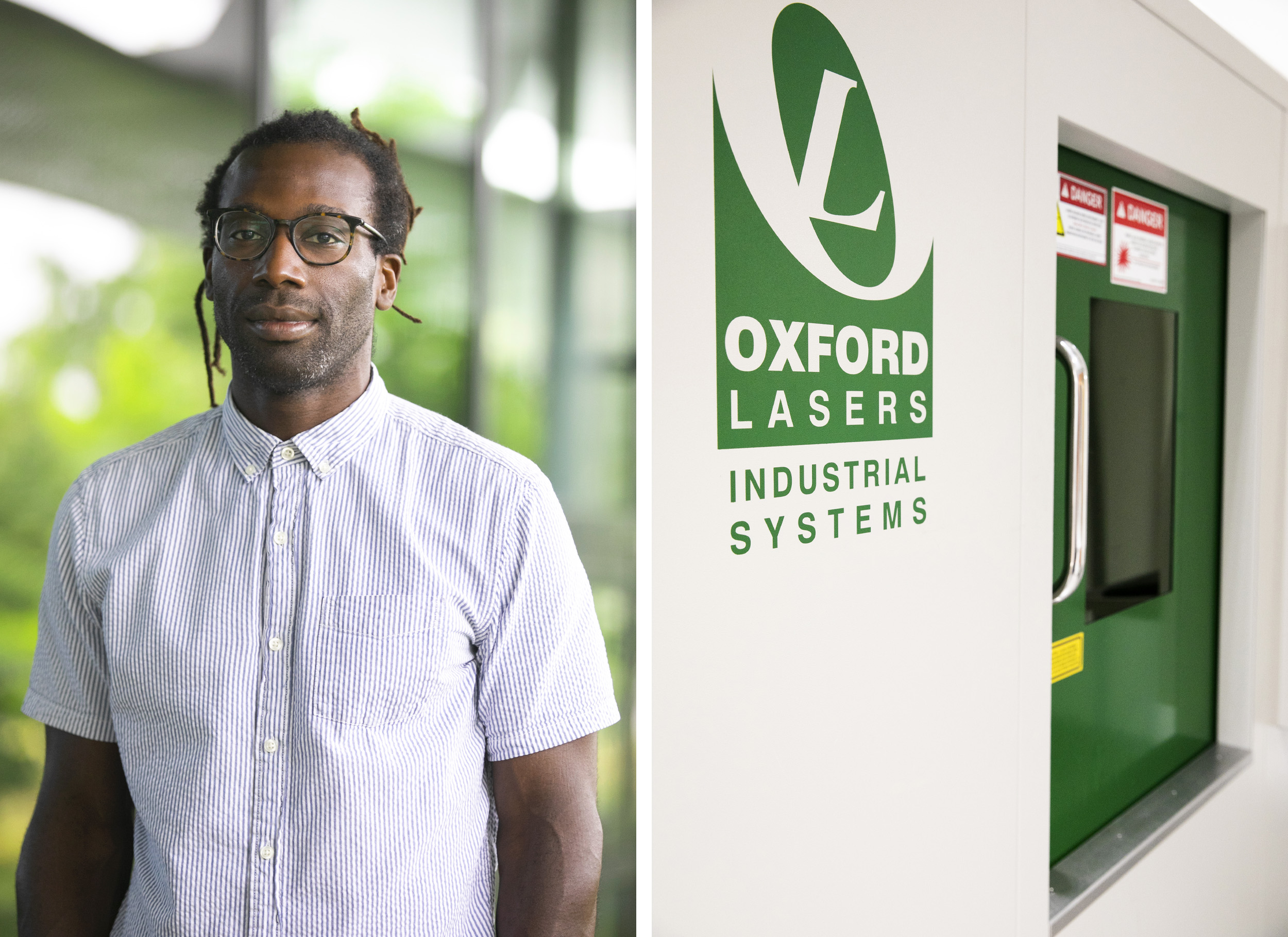
Photos by Stephanie Mitchell/Harvard Staff Photographer
Oluwaseun Araromi
Postdoctoral researcher, Harvard John A. Paulson School of Engineering and Applied Science
Favorite item: Precision laser cutters
When people talk about pinpoint accuracy, Araromi says this is what they are referring to. The laser, which he uses to make soft sensors for wearable robotics, operates at a frequency that can cut through metals with speed and power — and meticulous accuracy. What draws Araromi to the cutter is the seemingly endless possibilities for engineering devices you could make with it.
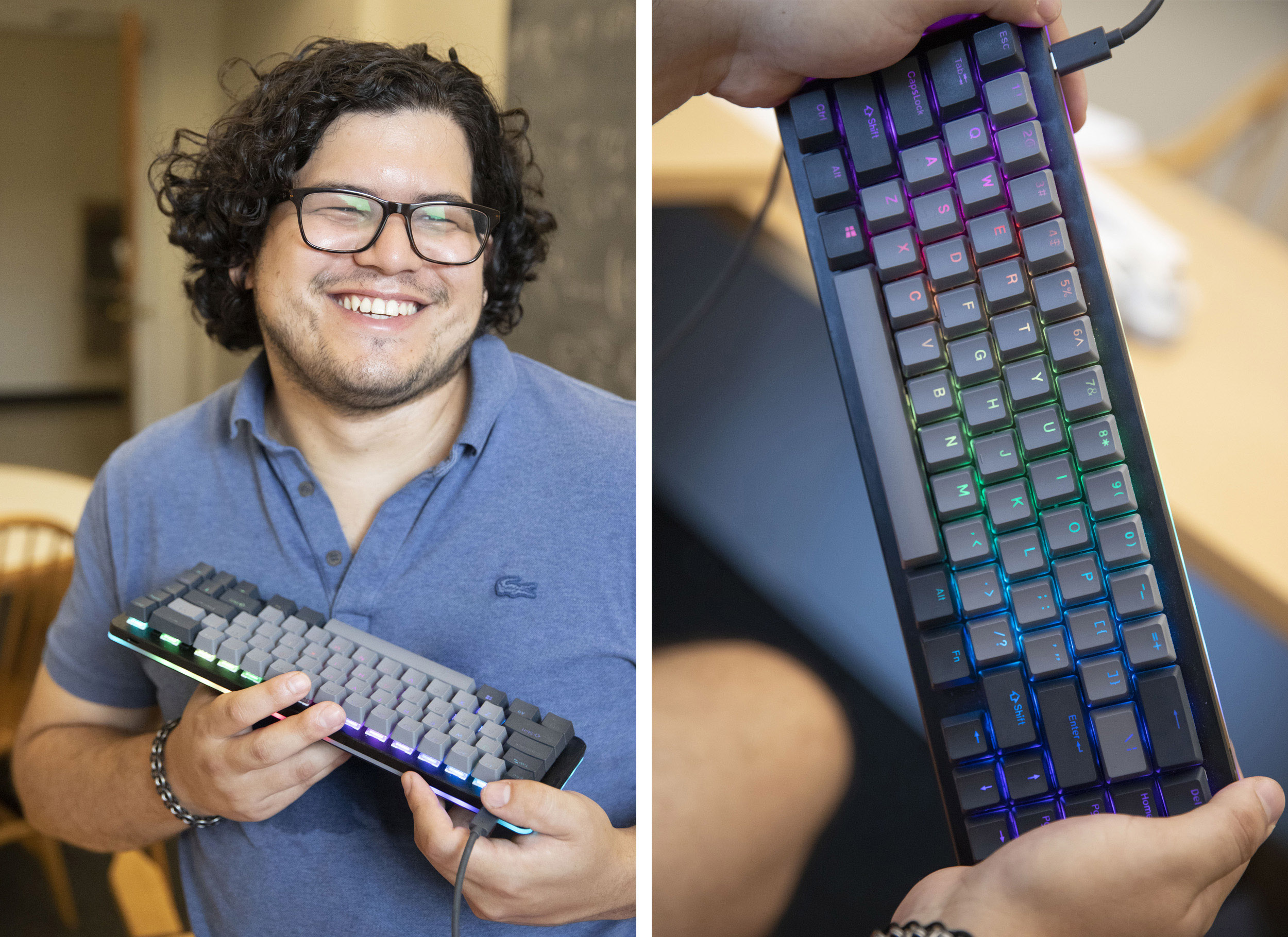
Photos by Kris Snibbe/Harvard Staff Photographer
Carlos Argüelles-Delgado
Assistant professor, Department of Physics
Favorite item: Mechanical keyboard
Argüelles-Delgado’s most cherished tool is his keyboard. Why? For the old-school clicking noise the keys make. “I like the feedback, I like feeling and the sound of typewriters,” he said. “This makes that classic keyboard sound.” It’s not just the clicking; there’s something inherently meta about the act itself as he uses it to develop software for data analysis on neutrino particle events. They are among the fundamental building blocks of nature, observed in the IceCube Neutrino Observatory, near the South Pole in Antarctica: “You’re actually putting science, your knowledge, into the machine, and that is something that I think is neat.”
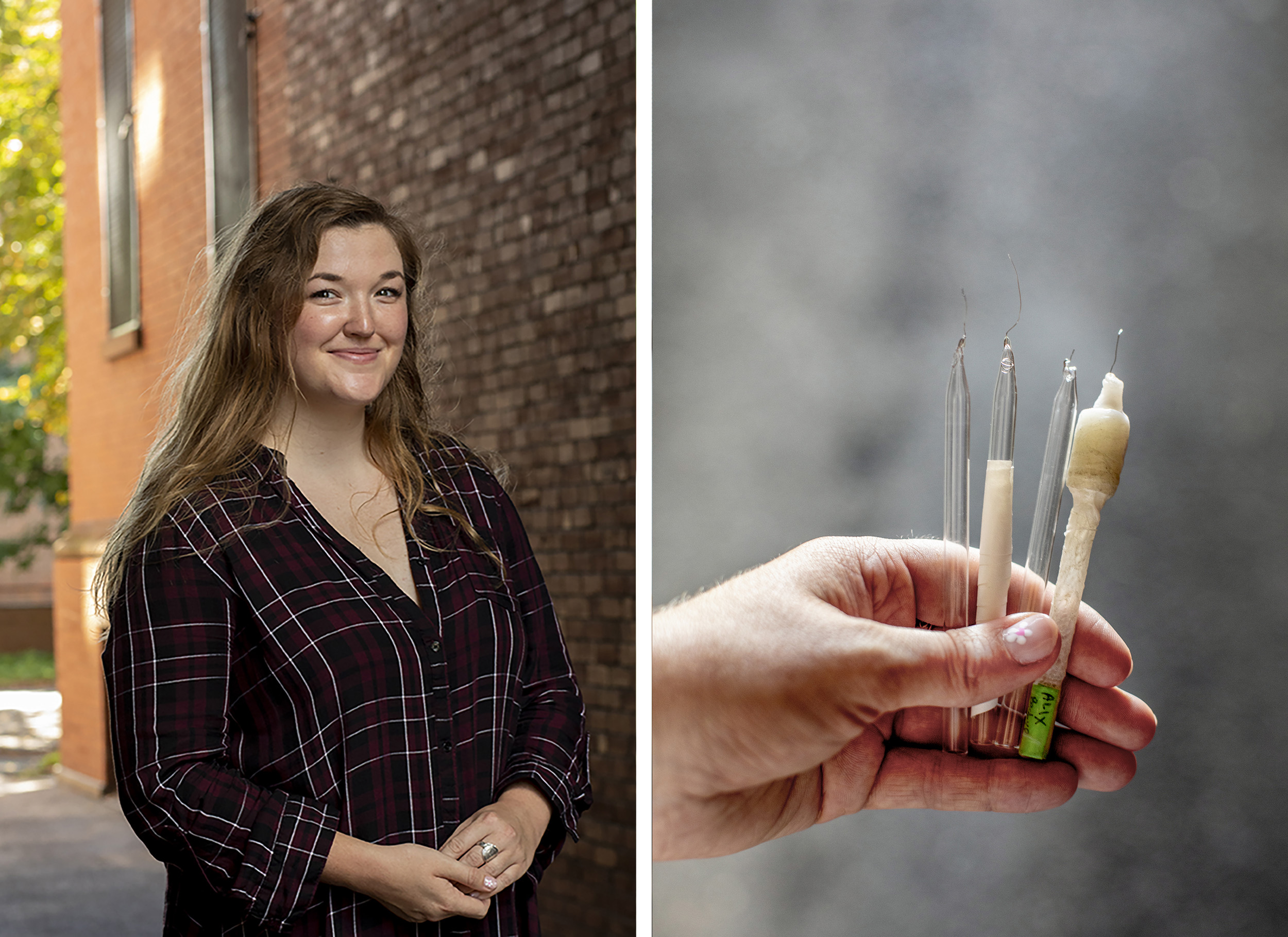
Photos by Rose Lincoln/Harvard Staff Photographer
Nicole Bush
Graduate researcher, Department of Molecular and Cellular Biology
Favorite item: Worm pick
Sometimes it’s the things you make yourself that are the best. That’s the case with Bush, a sixth year Ph.D. student in the molecules, cells and organisms program. She uses a tool called a worm pick to work with C. elegans. “This is a classic tool that every worm lab person needs,” she said. It originated in the 1970s to move worms from plate to plate and has been serving that purpose ever since. Researchers make their own picks and customize them. Bush’s handles are all wrapped in pink, for example. Making the tool involves breaking the end off an old glass Pasteur pipette, inserting a tiny strip of platinum, and melding them. A penny and nickel are then used to hammer the platinum strip, which is also sandpapered so as not to impale the worms. “What I love most about the worm pick is the individuality of each one, and the fact that we make them in our own lab. It’s a huge part of C. elegans lab culture, and is a great way to show your individuality on the bench.”
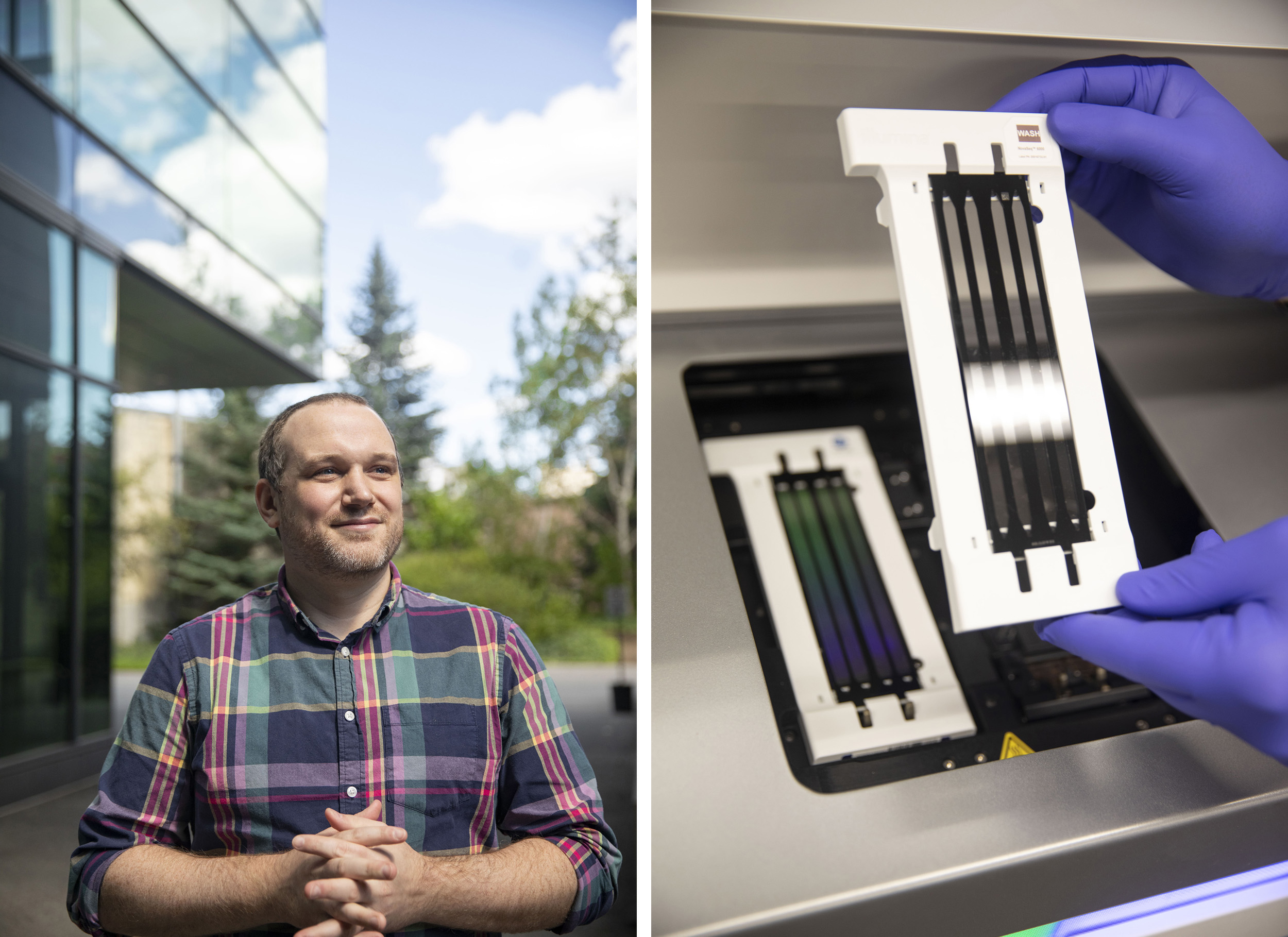
Photos by Kris Snibbe/Harvard Staff Photographer
Daren Card
Postdoctoral fellow, Department of Organismic and Evolutionary Biology
Favorite item: Modern sequencing machines
Card relies on modern sequencing machines, which help not only to sequence fragments of a genome but to sequence the entire thing. For a geneticist like Card, who studies traits that seem to show up repeatedly in an organism, these machines are key to figuring out why. There are varieties of them but they are usually desktop- or printer-sized pieces of machinery that scientists can pop DNA fragments into. They’re expensive, futuristic looking, and aesthetically pleasing, Card said. “They’re kind of sexy pieces of equipment.”
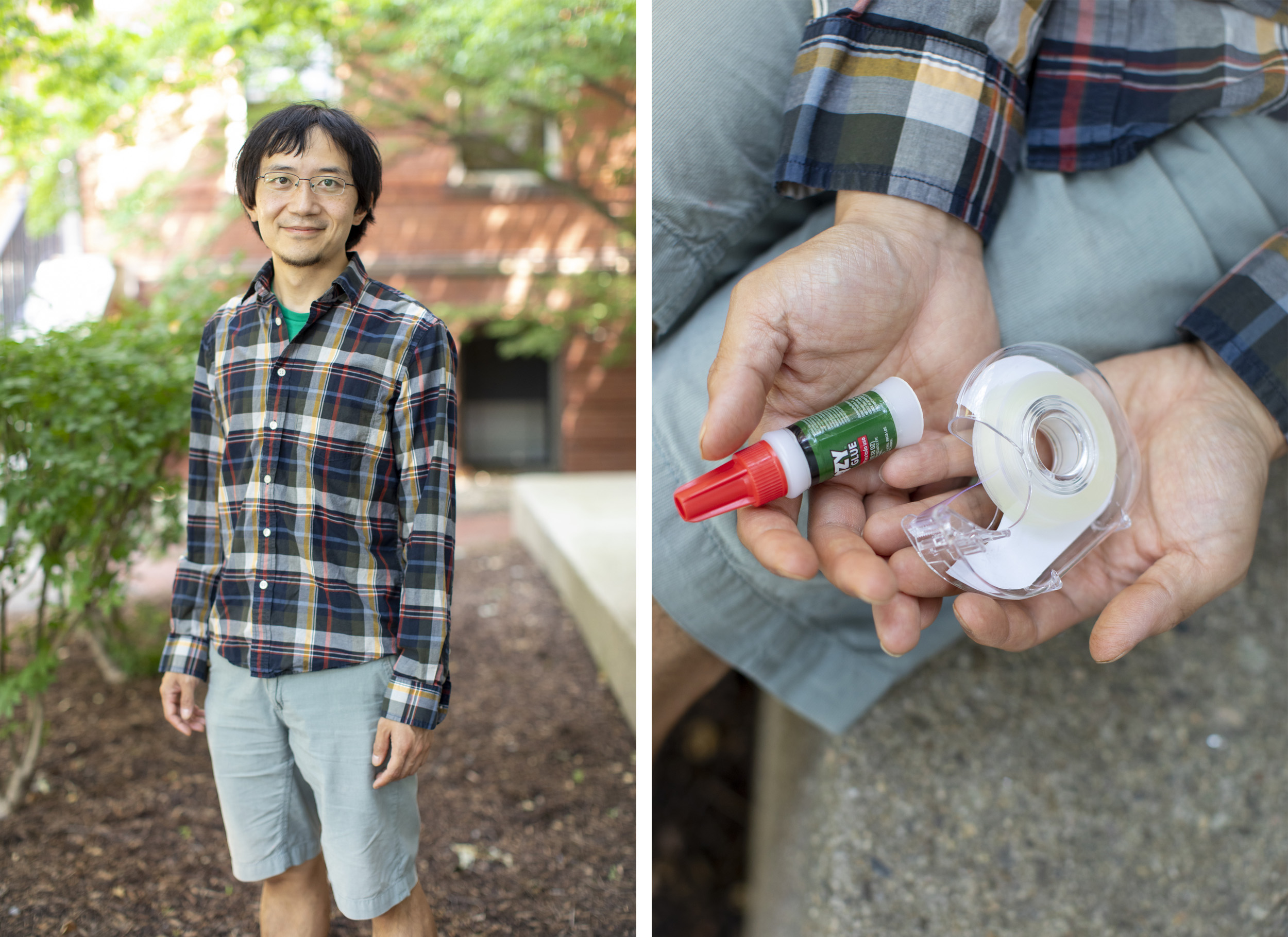
Photos by Rose Lincoln/Harvard Staff Photographer
Roger Fu
Assistant professor, Department of Earth and Planetary Sciences
Favorite item: Scotch tape and super glue
Fu uses a novel instrument called a quantum diamond microscope to measure the magnetic history of rocks and meteorites, but his favorite pieces of equipment can be found almost anywhere: double-sided Scotch tape and a bottle of Krazy super glue. “We use the QDM to look at really minute magnetic signatures in rocks,” Fu said. “So we need our samples to be free of contamination — that is free of any kind of iron or magnetic particle.” That’s where the glue and tape come in, which he uses to hold the samples together and in place while under the microscope. “They are really clean magnetically,” he said of his humble favorites. “They are a very reliably pure substance.”
Credit: Juliana García-Mejía
Juliana García-Mejía
Graduate researcher, Center for Astrophysics | Harvard & Smithsonian
Favorite item: Opticentric machine
For García-Mejía ’17, who is leading the design and construction of a new telescope camera in the search for signs of extraterrestrial life, the essential lab equipment on hand is an Opticentric machine. It allows scientists to precisely stack lenses on top of each other with just the thinnest of space separating them — about a third the width of a human hair. “I just didn’t even know that there existed a machine that could allow you to get the positioning of something to that level of precision,” said García-Mejía. The Opticentric can also become the lab equivalent of the legendary office water cooler. “The engineers and I often have conversations sitting around it,” she said. “They mentor me and impart knowledge as we joke about the idiosyncrasies of our lives and jobs and discuss intently how we plan to proceed with the project.”
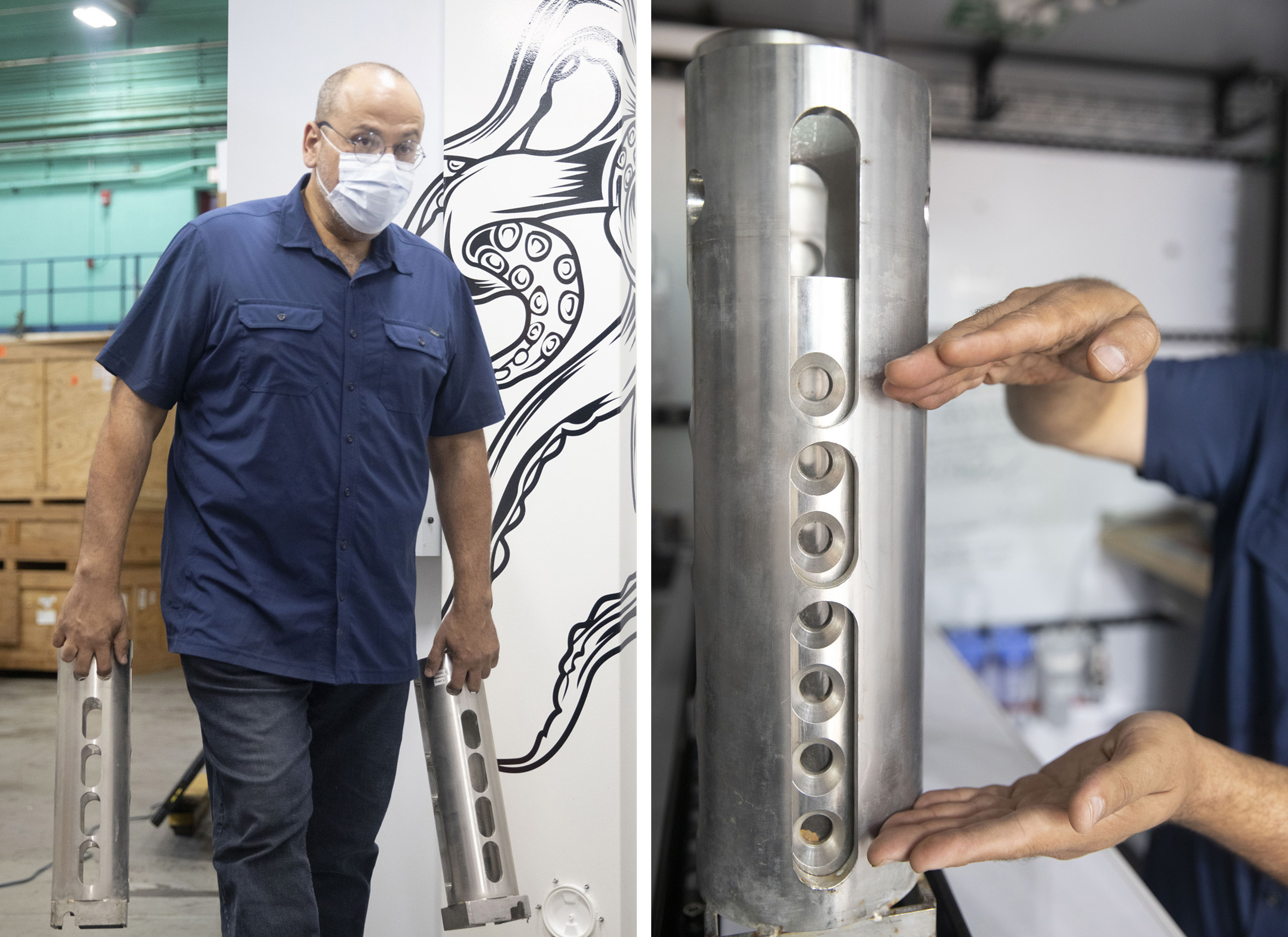
Photos by Kris Snibbe/Harvard Staff Photographer
Peter Girguis
Professor, Department of Organismic and Evolutionary Biology
Favorite item: Mobile pressure van
Girguis’s favorite piece of equipment is the product of creativity and ingenuity. Dubbed the mobile pressure van, it is a kind of high-pressure aquarium used to keep deep-sea animals alive. The van is believed to be one of two in the world and started as a produce shipping container. “When we bought it, it was specifically hauling lettuce from the Central Valley in California to Massachusetts,” Girguis said. “We’ve taken it and reimagined it as a mobile laboratory, kind of like the International Space Station, but, of course, instead of space, we’re using this to simulate the ice-cold temperatures and high pressures of the deep sea.”
[gz_photo_layout_article_width image=”331095″ credit=”Photos%20by%20Jon%20Chase%2FHarvard%20Staff%20Photographer” /]
Rachel Harris
Postdoctoral researcher, Department of Organismic and Evolutionary Biology
Favorite item: Stirred pressure vessel
Hydrothermal vents are fissures on the deep seafloor from which geothermally heated water erupts. Harris’s favorite pieces of equipment mimic that in a lab setting. They are known as stirred pressure vessels and the ones Harris has taken a particular liking to are a suite of four titanium reactors retrofitted for this unique purpose. They allow the deep-sea biologist to study the habitable limits of life on Earth and to explore the potential of other ocean worlds such as Jupiter’s moon Europa and Saturn’s moon Enceladus. “They give me a lot of confidence to be able to explore this new frontier of high-pressure microbiology research,” Harris said.
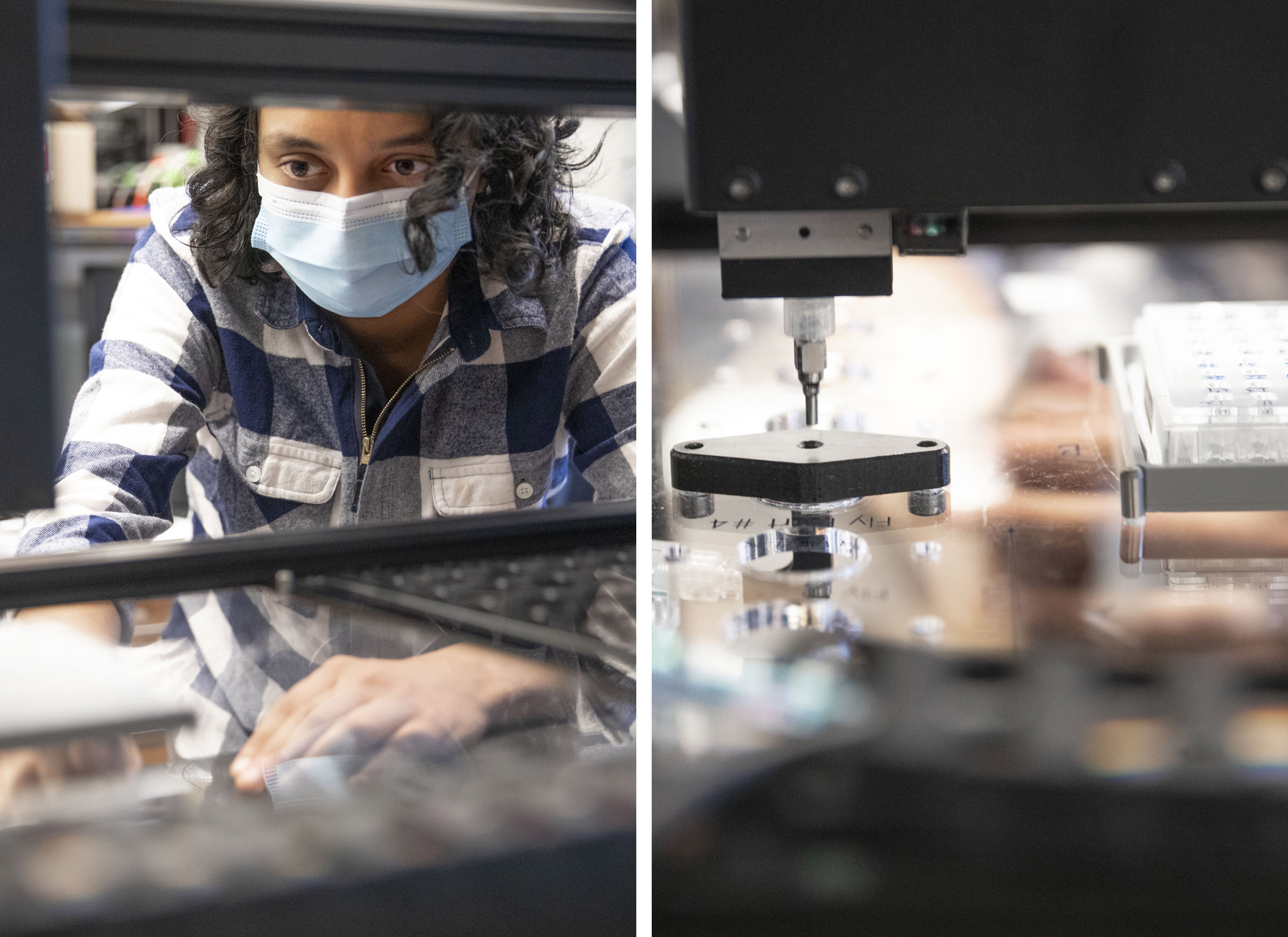
Photos by Kris Snibbe/Harvard Staff Photographer
Shraddha Lall
Graduate researcher, Department of Organismic and Evolutionary Biology
Favorite item: MAPLE, the fly-handling robot
For Lall, a third year Ph.D. student, moving a single fly from point A to point B is a repeated everyday task. To do so delicately, efficiently, and without mixing up the flies, she uses a Modular Automated Platform for Large-scale Experiments, or MAPLE. This organism-handling robot can carefully grab one fly at a time, sort flies into different test tube-like wells, and put them back without — it needs to be said — hurting a fly.
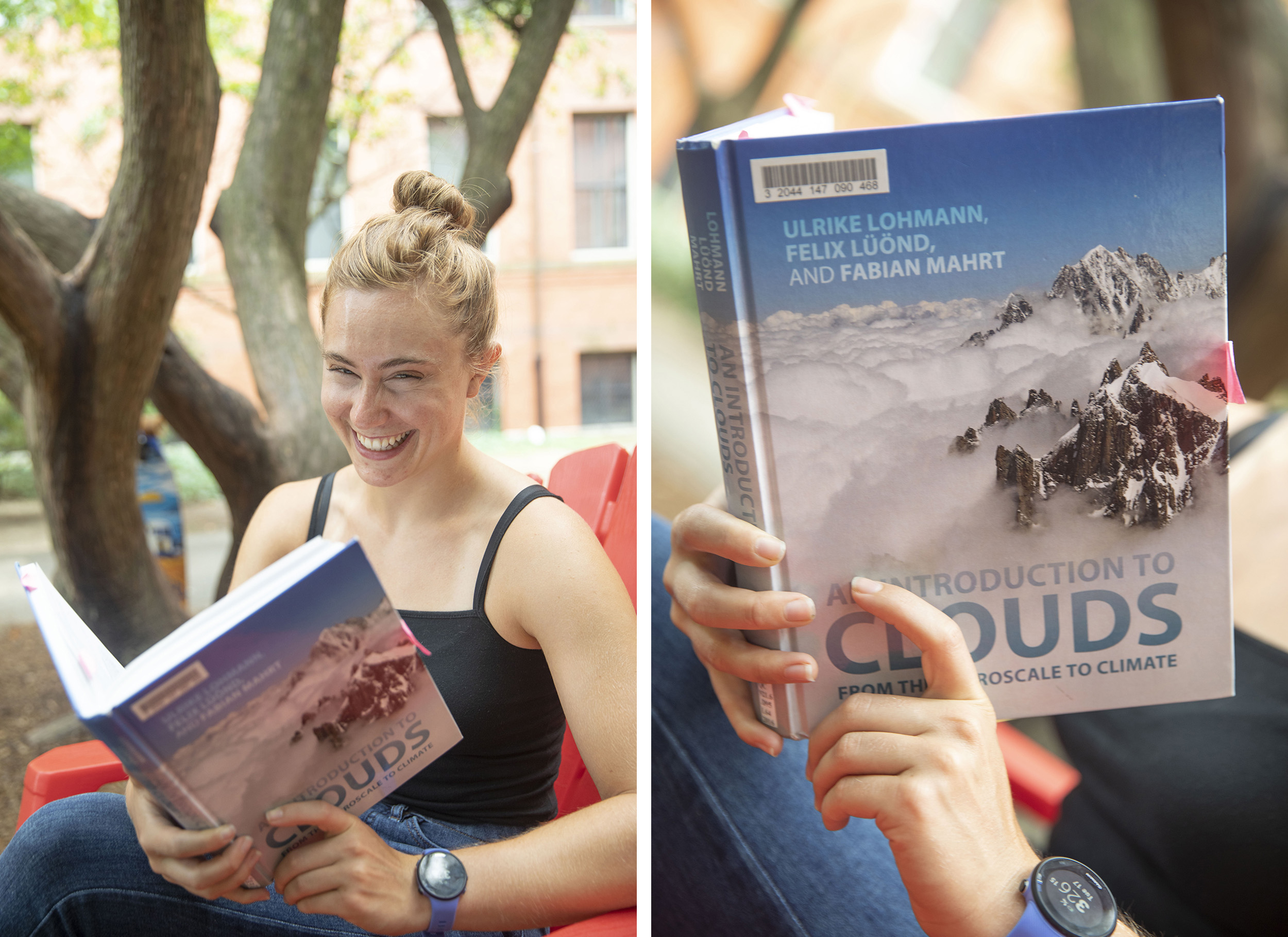
Photos by Kris Snibbe/Harvard Staff Photographer
Kaitlyn Loftus
Graduate researcher, Department of Earth and Planetary Sciences
Favorite item: Textbook
When it comes to her favorite piece of scientific equipment, Loftus is old school. She goes with a textbook. As a theorist who studies how the water cycle works on different planets, the fifth year Ph.D. student says whenever she is working on a project, she almost always keeps a stack of textbooks handy. They can be from the Harvard Library or part of her own collection. “It’s a way to really learn about almost anything that’s been done before,” she said. “[A way of] standing on the shoulders of giants.”
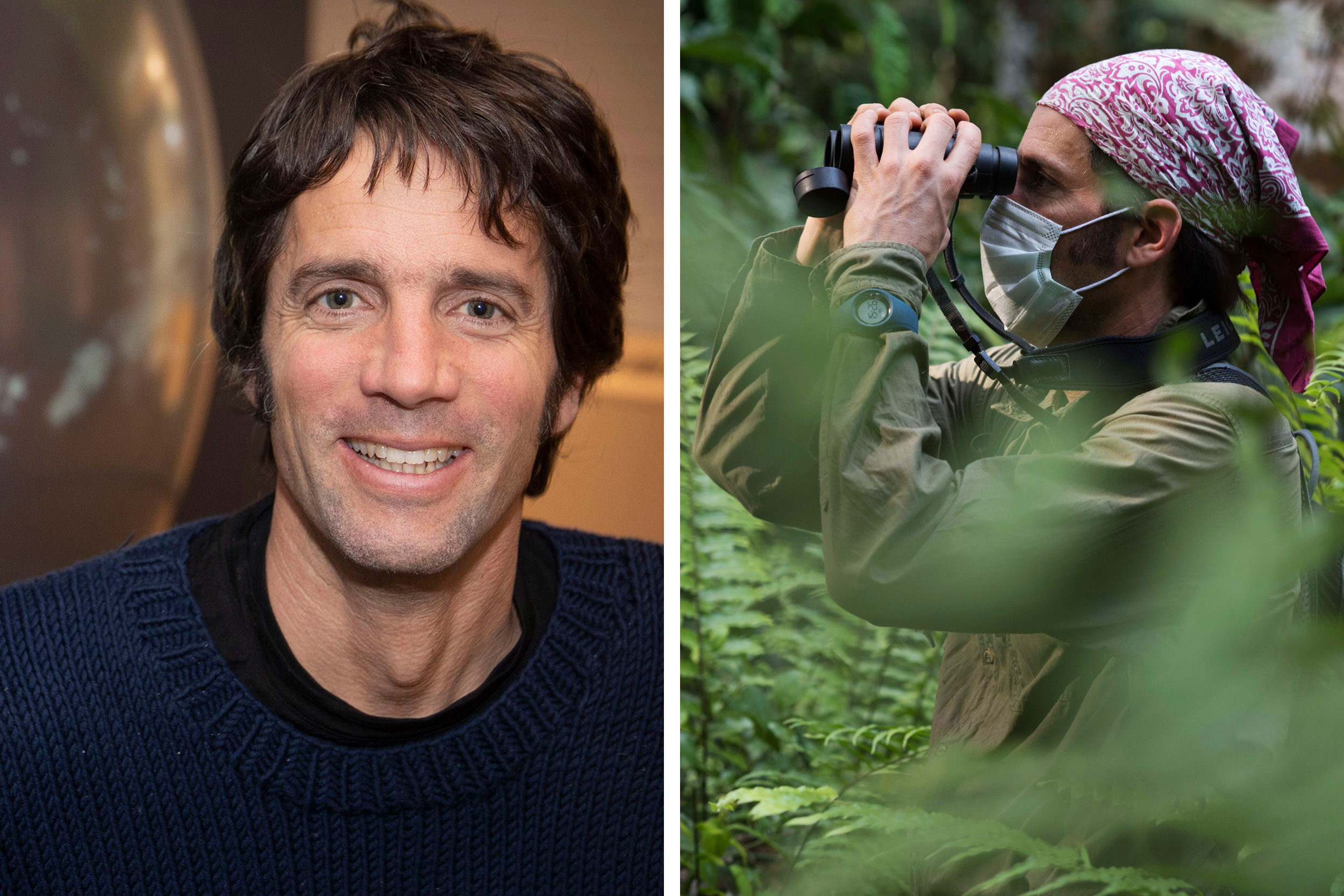
Photos by Kris Snibbe/Harvard file photo; courtesy of Martin Surbeck
Martin Surbeck
Assistant professor, Department of Human Evolutionary Biology
Favorite item: Binoculars
For someone who’s always loved observing wild animals, binoculars have been essential. Surbeck remembers as a kid saving all his money to buy binoculars, which can cost around $2,000 for a good pair. “For a long time it was my most expensive possession,” Surbeck said. He’s owned two other pairs since then and they have all come in handy, especially for a primatologist who now spends much of his time observing wild bonobos in the Democratic Republic of the Congo.
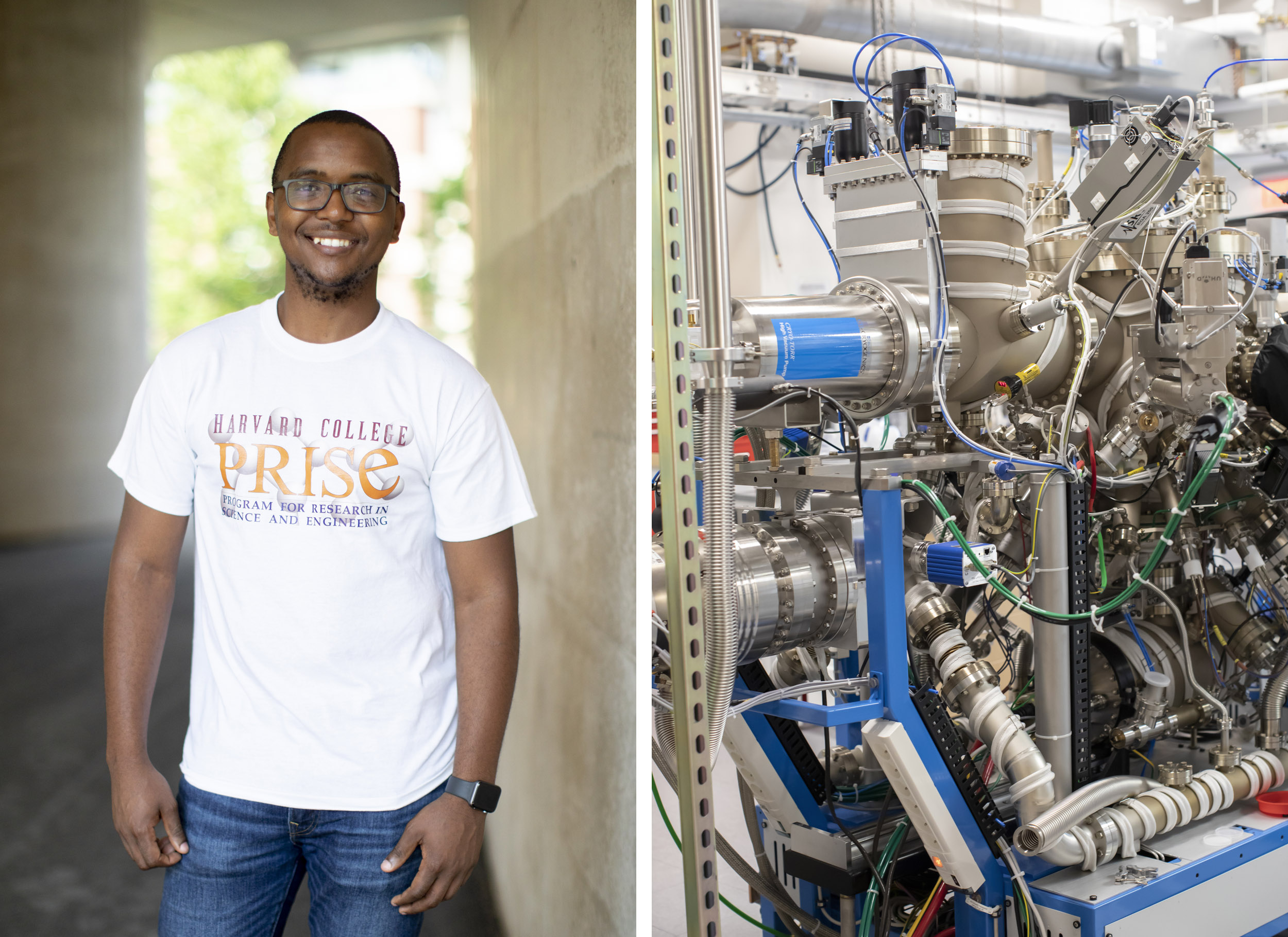
Photos by Rose Lincoln/Harvard Staff Photographer
Lerato Takana
Undergraduate researcher, Department of Physics
Favorite item: Molecular beam epitaxy tool
In his first year in a physics lab, the College senior has been using this ultra-powerful vacuum to grow thin-film oxides. He’s been quite impressed with the machine in part because it gives the operator the ability to synthesize films as thin as 20 nanometers (reminder: a nanometer is one billionth of a meter). The career potential for mastering the tool is incredible, he said. “As my professor usually says: Can you imagine dealing with singular atoms and then actually holding the atoms you grew? Einstein never got this chance.”
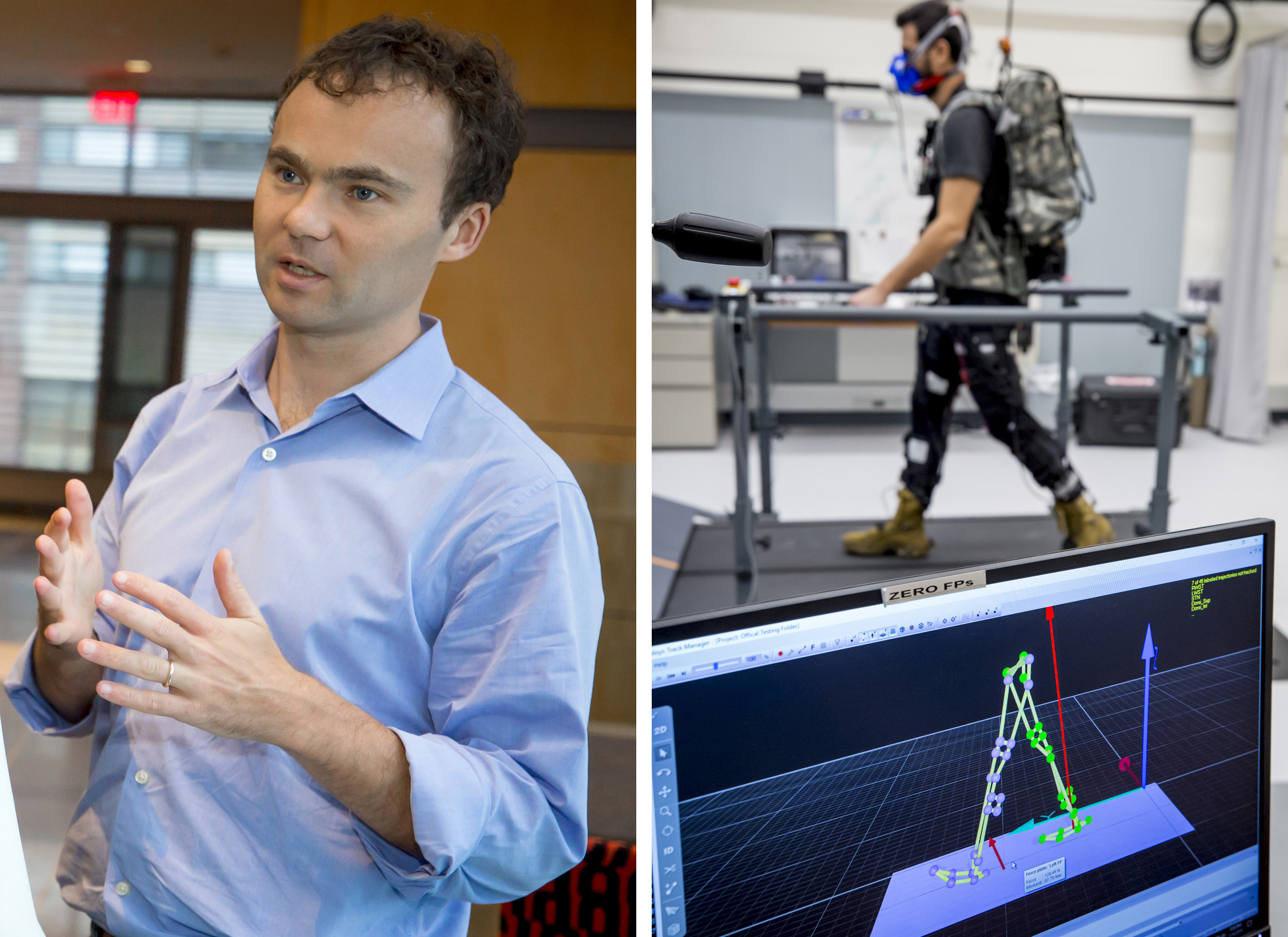
Photos by Kris Snibbe/Harvard Staff Photographer
Conor Walsh
Paul A. Maeder Professor of Engineering and Applied Sciences and associate faculty member at the Wyss Institute, Harvard John A. Paulson School of Engineering and Applied Sciences
Favorite item: 3D motion capture system
Walsh’s 3D motion capture system helps him and his colleagues understand how people move. Set up in a shared space in the new Science and Engineering Complex, the system allows Walsh to carry out many of the biomechanics and physiology experiments crucial to his work. “Essentially, we put reflective markers on various parts of a person’s body … and we use cameras to track those and then are able to use that data combined with a kinematic model to compute how each different part of the body is moving during a walking, running, lifting cycle, or some other type of motion or activity,” he said.


